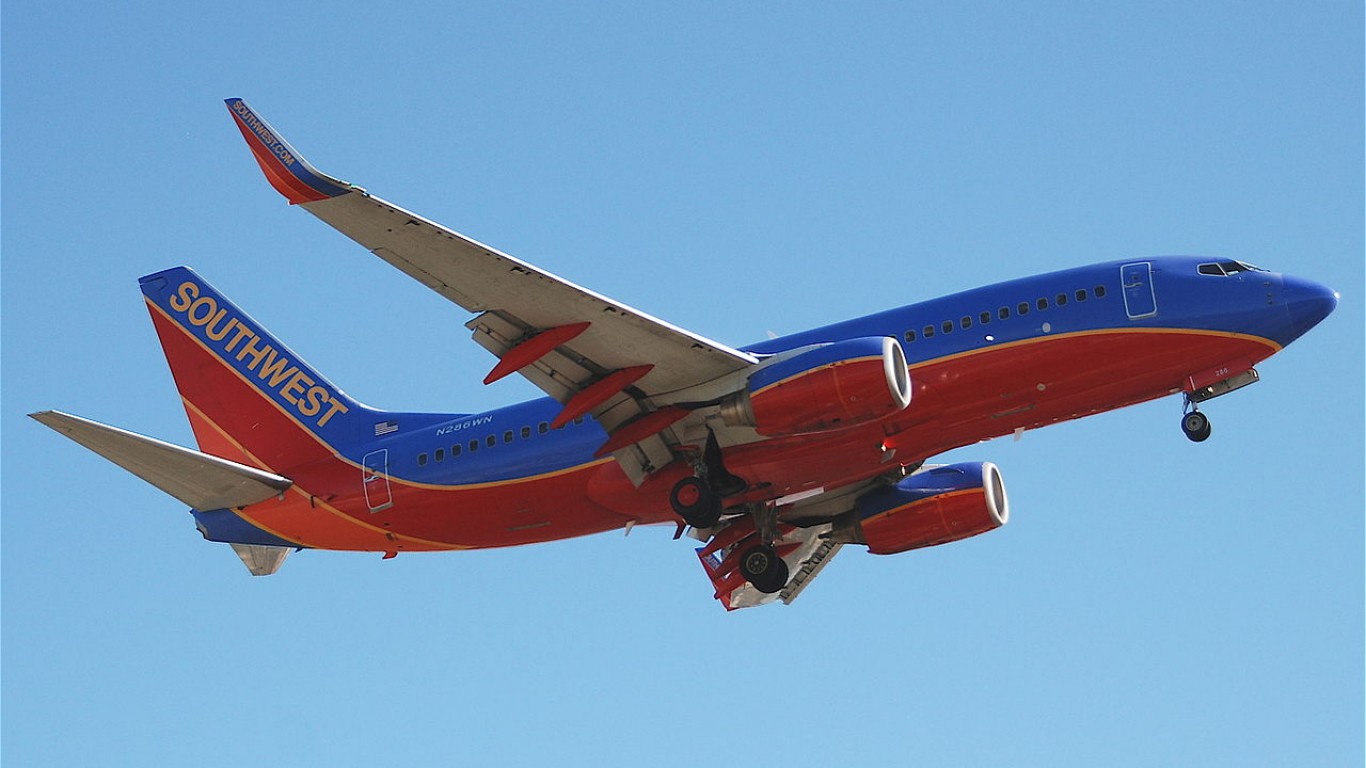Transportation
Southwest Airlines Was Right: Q2 Results Were Worse Than in Q1

Published:

Southwest Airlines Corp. (NYSE: LUV) reported second-quarter 2020 results before markets opened on Thursday. The low-cost carrier posted an adjusted earnings per share loss of $2.67 on operating revenues of $1.0 billion. In the second quarter of 2019, the airline posted earnings per share (EPS) of $1.37 on revenues of $5.9 billion. Analysts were expecting Southwest to post a per-share loss of $2.66 on revenues of $845.3 million.
On a GAAP basis, Southwest’s net loss per share totaled $1.63. The company’s GAAP loss includes $784 million related to federal support payments and the effects of the company’s voluntary separation program.
When Southwest reported first-quarter earnings in April, the company warned that the second-quarter numbers would be worse, and that prediction came true. In the first quarter, the airline reported an adjusted per-share loss of $0.15 on operating revenues of $4.23 billion.
Southwest said it burned a daily average of $23 million in cash during the second quarter, dropping from $30 million a day in April to $16 million in June. The company expects cash burn to total $18 million a day in July and, for the third quarter, to be in line with the $23 million daily burn reported for the second quarter.
In April, Southwest’s operating revenue fell by 91.8% and the company’s load factor was a mere 7.8%. The situation improved in May as operating revenue for the month was 84.7% lower than in May 2029 and load factor rose to 29.9%. June showed even more improvement, with revenue down 73.3% year over year and load factor rising to 49.5%.
Beginning in July, bookings for future months have “softened,” cancellations have increased “modestly” and the rate of sequential improvement “has slowed.” Southwest expects July revenue to be 70% to 75% lower than in 2019 and load factor to dip to a range of 40% to 45%. August is projected to be slightly worse, with revenue 70% to 80% lower than in August 2019 and load factor dropping to a range of 30% to 40%.
CEO Gary Kelly said that Southwest expects demand for air travel to remain depressed “until a vaccine or therapeutics are available to combat the infection and spread of COVID-19.”
The company also said that it does not plan either to furlough or lay off employees or to cut pay or benefits through the end of the year, but that it will “continue to plan for multiple weak scenarios and maintain our preparedness.”
Southwest reported cash and equivalents of $14.5 billion and $1.0 billion available on its revolving credit facility. Since the beginning of 2020, Southwest has raised approximately $17.3 billion in cash, including $12.2 billion in financings and sale-leaseback transactions, $2.2 billion through a common stock offering and $2.9 billion from the federal Payroll Support Program.
Shares traded up about 1.5% in Thursday’s premarket session, at $33.80 in a 52-week range of $22.47 to $58.83. The 12-month consensus price target on the stock is $41.18. The company has suspended its dividend and share buyback program.
After two decades of reviewing financial products I haven’t seen anything like this. Credit card companies are at war, handing out free rewards and benefits to win the best customers.
A good cash back card can be worth thousands of dollars a year in free money, not to mention other perks like travel, insurance, and access to fancy lounges.
Our top pick today pays up to 5% cash back, a $200 bonus on top, and $0 annual fee. Click here to apply before they stop offering rewards this generous.
Flywheel Publishing has partnered with CardRatings for our coverage of credit card products. Flywheel Publishing and CardRatings may receive a commission from card issuers.
Thank you for reading! Have some feedback for us?
Contact the 24/7 Wall St. editorial team.